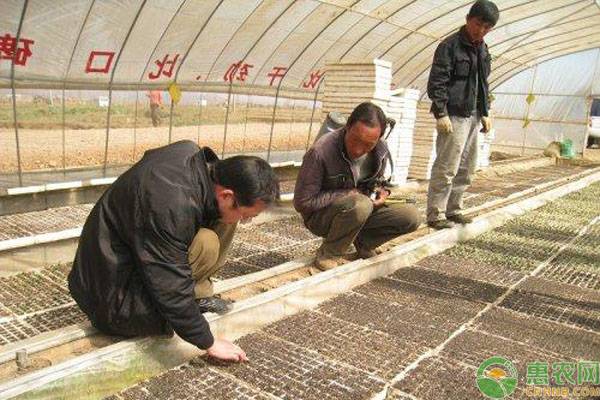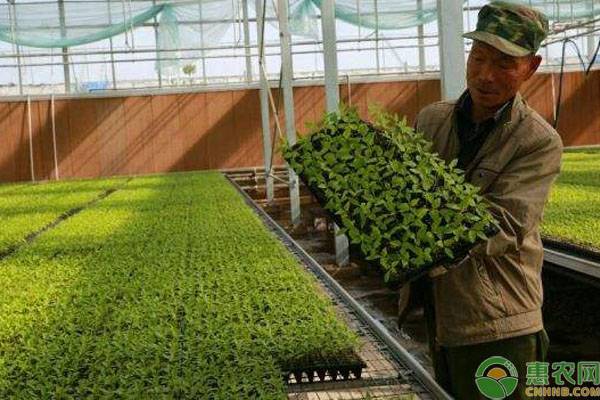What should I pay attention to in early spring vegetable breeding? Roots and cold damage prevention measures must be known to farmers!
In the spring, the cold tail is warm, and the temperature at this time is very unstable. In addition to doing field management, we must prevent these two situations. Especially vegetable seedlings, a little mismanagement, not only waste investment, but also may delay the optimal timing of vegetables.

Vegetable seedling
Vegetable seedlings are the cultivation techniques of the vegetables to be cultivated, first planted in the seedbed, and then transplanted to the field after the seedlings grow to a certain extent. It has the advantages of cultivating strong seedlings, facilitating centralized and fine management of seedling stage, entering into the field in advance, and growing quickly after transplanting.
What problems should be paid attention to in vegetable seedlings?
1, 沤 (ou) root
The most common disease during vegetable seedlings is roots, especially in early spring, where roots are most common and serious. When the seedlings are rooted, the young roots of the roots are brown rot, the aboveground part loses the source of nutrients, becomes wilting and yellow, and the seedlings eventually die.
Occurrence factor:
It has a great relationship with temperature and humidity. During vegetable seedlings, the growth temperature should be around 25 degrees Celsius. If the temperature is too low, it is prone to rooting. The seedbed soil or seedling nutrient nutrient water content is large, if the humidity is too high, it is easy to cause root hypoxia, causing seedling roots.

Precaution:
Try to choose seedlings in the facility to ensure adequate temperature. However, the nursery and the field should be separated as much as possible to avoid some diseases; the soil of the seedbed should be as good as possible, and the place where irrigation and drainage is convenient to not accumulate water is better; try to control the amount of watering and the number of watering, the soil is basically dry and wet. In the rainy days, try not to water; when the roots are rooted, timely ventilation and wetting, planting grass ash and dry soil in the field to reduce the humidity and heat preservation; and spraying hormones to improve the stress resistance of the seedlings and promote new roots Giving birth.
2, low temperature chilling
Cold damage in early spring, and late spring frost are the phenomenon of freezing damage often encountered during vegetable seedlings. It is the main factor causing rotten roots and dead seedlings in spring.
Precaution:
Pay close attention to the weather changes, add heating facilities in the facility before the cold current, or temporarily build a warm shed, mulch, etc., to improve the temperature inside the shed and prevent freezing damage. Before the frost comes, the field will cultivate the loose soil in time, which will not only improve soil permeability, reduce humidity, but also play a role of heat preservation, thus reducing the degree of frost damage.
After the seedlings are released, the seedbed is ventilated in time, and the seedlings are subjected to low temperature exercise to improve the adaptability of the seedlings to the cold current. The ventilation and ventilation time should be determined according to the weather conditions, and the ventilation time should be extended accordingly when the temperature is high. Before the frost comes, the seedlings can be sprayed with water to slow down the surface temperature of the seedlings, so that the seedlings can adapt to the temperature of the sudden drop.

The above is the precautions for early spring vegetable seedlings. As long as these two points are managed well, there is absolutely no problem in seedling survival!
For the wonderful pictures and popular comments on vegetable seedlings, you may be interested in the following recommended contents. Welcome to read.
Cosmetics Materials
Analysis of the direction of the application of cosmetic raw materials
Plant extracts are widely used in cosmetic ingredients. The use of plant extracts in cosmetics can help improve the texture, appearance and health of the skin. The functional applications are as follows:
1. Anti-oxidant Raw Material: Many plant extracts have antioxidant properties that can help protect the skin from free radical damage. For example, green tea extract, grape seed extract and vitamin C are common antioxidants.2. Moisturizing Raw Materials: Many of the ingredients in plant extracts have moisturizing properties that help the skin retain moisture. For example, aloe vera extract, hyaluronic acid and glycerin are common moisturizers.
3. Anti-inflammatory agents: Some plant extracts have anti-inflammatory properties that can reduce skin inflammation and redness. For example, chamomile extract and tea tree oil are widely used to treat inflammatory skin problems.
4. Whitening And Clearing Speckles Raw Materials: Some plant extracts have a whitening effect and can reduce melanin deposits in the skin. For example, lemon extract, arbutin and tyrosine are commonly used whitening agents.
5. Anti-aging And Anti-wrinkle Raw Materials: Some plant extracts are rich in anti-aging ingredients, which can reduce wrinkles and fine lines in the skin. For example, grape seed extract, soy isoflavones and collagen are common anti-aging agents.
Cosmetics Materials,Body Care,Cosmetic Raw Material,Oatmeal Beta Glucan
Xi'an XJeson Biotech Co., Ltd , https://www.xjesonbio.com